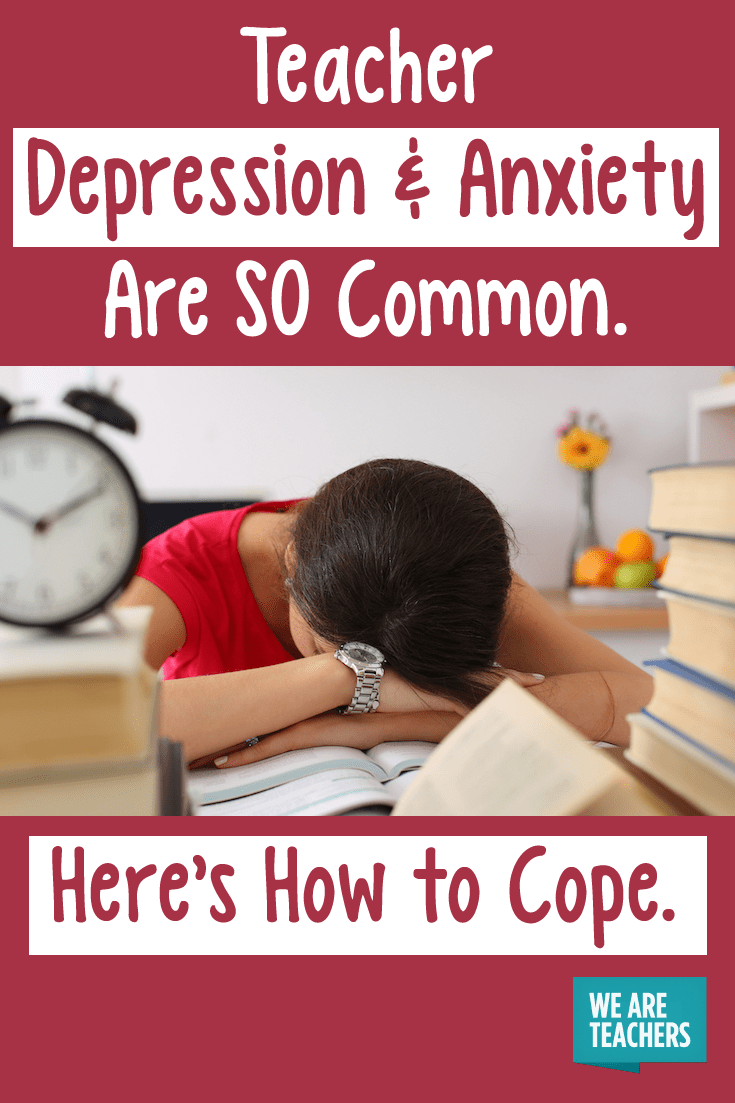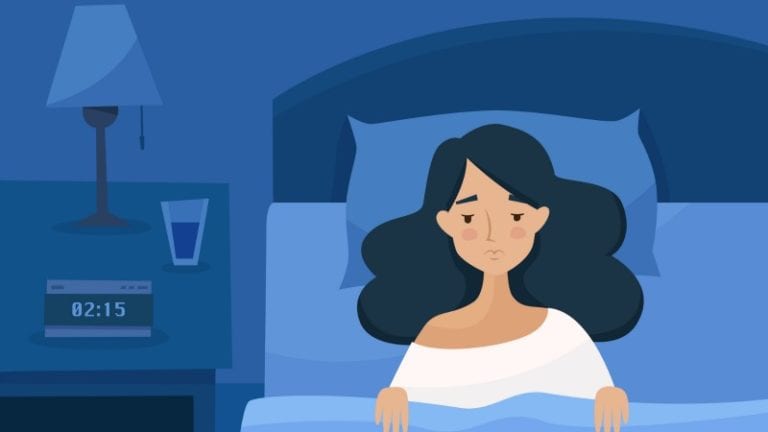Teaching is a stressful profession, even under the best of circumstances. You must be “on”—engaging and affable in front of a group of learners—nearly all the time. Your work day frequently stretches well past 3 pm, and work responsibilities (and worries) spill over into your free time. You’re assessed on measures (such as student test scores) over which you have little control. And all too often, you’re working without the resources or support you need to really do your job well.
These issues are challenging for all teachers. They’re super challenging for teachers who have depression and anxiety disorders. Approximately 6.8 million American adults, or 3.1 percent of the population, have generalized anxiety disorder (GAD). More than 16.1 million American adults, or about 6.7% of the U.S. population age 18 and older, are diagnosed with Major Depressive Disorder in a given year. And about 3.3 million American adults suffer with Persistent Depressive Disorder—a form of depression that usually continues for at least two years. And if you think the rate of teacher depression may be even higher, you could be right.
Both depression and anxiety are far more common in women than in men, and with the preponderance of women in teaching, it’s highly likely that the rate of teacher depression and anxiety dwarfs the statistics for the population at large.
Don’t let depression and anxiety steal your love of teaching or your ability to enjoy life. These six tips, from teachers who’ve been there, can help you cope.
1. Buddy up.
Prone to panic attacks? Find a colleague who can step in and take over for you as necessary. That’s what Crystal J., a teacher in South Carolina, recommends: “I had a buddy at school. If I called her, she would come to my class and let me go to the bathroom.”
Lauren P., a ninth grade English teacher, accidentally stumbled on the same solution. “I had a panic attack in the classroom right before second period started,” she says. “The interventionist specialist I work with took over and let me go calm down.”
2. Seek help.
It can be really hard to admit you need help and even harder to get yourself to schedule a counseling session or medical appointment, especially when depression and anxiety are clouding your judgment and stealing your mojo. But teachers who have been there swear by appropriate treatment.
Rebecca S., a seventh and eighth grade English teacher in Buffalo, New York, was diagnosed with depression before she became a teacher, but years, she now knows, after her symptoms started. Medication and counseling have changed her life.
“[My antidepressant] gave me my life back,” she says. She encourages other teachers to consult an expert. “When we experience physical symptoms, we go to a doctor, tell them our symptoms, and let them decide whether we need antibiotics or not,” she says. “I say we should do the same thing for mental health. Share your symptoms, and they’ll give you professional, expert advice.”
“If you were diagnosed with diabetes, you would treat it,” Rebecca continues. “You would take care of yourself, change your eating and drinking habits, see your doctor regularly, and take medication as necessary.”
3. Get moving.
Exercise boosts the amount of feel-good chemicals in the brain and can help ease the symptoms of both depression and anxiety. That’s something T.D., an Oregon-based teacher, learned after she had to discontinue taking her antidepressant due to side effects.
“I searched for alternatives and discovered that exercise and getting out into nature really balanced me,” she says. “Now, I get out as much as possible and try to exercise regularly,”
4. Invest in other sides of yourself.
Sometimes teaching is so all-consuming that we forget that there are many, many facets to who we are as individuals. Rekindle your interest in activities and pursuits outside of school. For example, if you are artistically inclined, take a drawing or painting class. If you love theater, try to schedule at least one performance a month. Join a club, sign up for a race, take a class just for fun. Create a network of people who have similar interests and whom you will look forward to meeting up with on a regular basis.
5. Try not to isolate yourself.
It’s natural to want to dive under the covers and hide when you’re feeling depressed. Avoid feeling isolated by maintaining social relationships, if you are able. Make a coffee date, invite a friend over for take-out pizza or Facetime an old friend. Share your feelings with a close friend or relative outside of school, ideally someone who has known you for a long time and can help you put your current situation into perspective.
6. Establish routines.
It’s so easy to let teaching take over your life! But teachers who’ve learned to live with depression or anxiety say it’s important to set boundaries and establish routines.
One junior high teacher told us, “It helps to wake up and go to bed at the same time, eat routine lunches, and set a schedule for after-school grading time and free time. For example, I will stay at school until 4:15 at the latest. After that I go home and have my free time and dinner. When I don’t stick to the schedule, I overwork myself, and I can’t sleep. I eat poorly, and I have headaches.”
Robin C., a teacher at Prague Public Schools in Oklahoma, concurs. “Between my obsessive-compulsive disorder (OCD) and anxiety, I’ve found that having my plans well written and being prepared with all my supplies helps me mentally, both beforehand and during the day.”
7. Prioritize mental health.
There’s nothing wrong—and whole lot right!—with taking an occasional mental health day, especially during periods of intense stress.
“I took one mental health day a month last year, especially if there was not a day off within that month,” says one middle school teacher. Because she was working in a less-than-supportive environment, she didn’t openly share the reason for her absences with administration, though she confided in some trusted colleagues.
And while many people would recommend relaxing self-care activities, such as massages and movies, for days off, she often used her mental health days to catch up on grading, phone calls, and doctor appointments.
The bottom line? Listen when your internal voice starts screaming that you need some time off. If your schedule is impossibly packed, try taking mindfulness breaks throughout the day to tide you over until you can take that mental health day.
8. Consider your environment.
An eighth grade science teacher in Houston, Texas, who would prefer to stay anonymous, says she was miserable in her previous job. “I didn’t have the kind of support or direction I needed. The teaching pay was the lowest in the country,” she says, and those stressful conditions exacerbated her underlying anxiety disorder.
Counseling and medication eased her symptoms—but what helped most was switching to a different, more supportive school this year. “My pay is much better, and I get treated a lot better,” she says. “I can’t emphasize enough how important it is to have support. If I wasn’t here, I know I would not be in as good of a place mentally as I am now.”
Have you dealt with teacher depression and anxiety? It can be such a tough issue to talk. If you feel like sharing, we’d love to hear about your experiences in our WeAreTeachers Chat group on Facebook.
Plus, how teachers deal with Sunday night anxiety.


